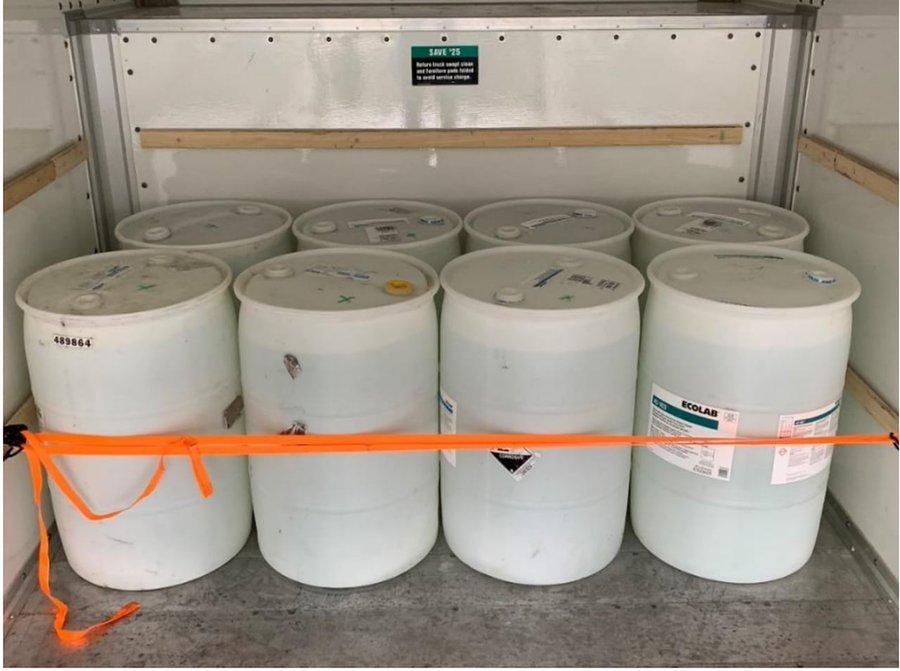Last week, authorities in Oregon announced the seizure of 1.4 metric tons of liquid heroin, an amount that Assistant U.S. Attorney Scott Kerin called “astronomical” in a court hearing. The bust has brought attention to the little-known form of heroin, which is now being distributed in the U.S. in increasing quantities.
What is Liquid Heroin?
Liquid heroin is powdered heroin that has been dissolved in water and then heated. The resulting serum can be injected directly into the body, providing a faster and more intense high than other forms of the drug. According to the National Institute on Drug Abuse, heroin is a highly addictive opioid that is derived from the seed pod of opium poppy plants in parts of Asia, Mexico, and Colombia. In the U.S., it is most commonly used by ingesting it as a powder, which can be white, brown, or black.
However, in recent years, liquid heroin has become more common, particularly in areas where heroin is in short supply. According to Clean Recovery Centers, a rehabilitation center in Los Angeles, liquid heroin is made by dissolving powdered heroin in water and then heating it. This process allows the heroin to be injected more easily, providing a faster and more intense high.
Effects of Liquid Heroin:
The effects of liquid heroin on the body are similar to those of other forms of heroin. When injected, the drug crosses the blood-brain barrier quickly, leading to a powerful analgesic and euphoric effect. However, the effects of liquid heroin can be more intense and dangerous than those of other forms of the drug.
According to Compassion Behavioral Health of Los Angeles, the short-term effects of liquid heroin can include:
* Dizziness
* Nausea
* Vomiting
* Respiratory depression
* Sedation
* Confusion
* Loss of consciousness
Long-term use of liquid heroin can lead to addiction, as well as a range of other serious health problems. These can include:
* Liver damage
* Kidney damage
* Heart damage
* Lung damage
* Infection
* Overdose
The Oregon Bust
The recent bust in Oregon involved 370 gallons of liquid heroin, which is enough to provide millions of doses of the drug. According to the U.S. Attorney’s Office, the heroin was being transported from Mexico to Oregon by a transnational criminal organization. Four men were arrested and are facing charges of conspiracy to distribute and possess with intent to distribute heroin and possess with intent to distribute heroin.
The investigation began when law enforcement obtained information that several people working for a Mexico-based transnational criminal organization were taking a large amount of illegal drugs into Oregon. Investigators followed a rented moving truck and a red pickup to a motel in Tigard, Oregon, where they served a search warrant and found the eight barrels containing the liquid heroin and two guns.
The amount of liquid heroin seized in the bust was described as “astronomical” by Assistant U.S. Attorney Scott Kerin. “Something we haven’t seen here in Oregon − nothing even has come close to that in the past,” he said.
The Rise of Liquid Heroin
Liquid heroin is not a new phenomenon, but it has become more common in recent years. According to Clean Recovery Centers, the liquid form of the drug is becoming more popular because it is easier to transport and use than powdered heroin.
Liquid heroin is often sold in small plastic bags or vials, making it easy to conceal and transport. It can also be mixed with other substances, such as soda or juice, to make it more palatable. This makes it easier to use in public places, such as bars or nightclubs.
However, the rise of liquid heroin has also brought with it a range of health and safety risks. Because the drug is often made in unregulated labs, it can be contaminated with other substances, such as fentanyl, which can increase the risk of overdose.
Addressing the Problem:
The recent bust in Oregon highlights the need for increased vigilance and action to address the problem of liquid heroin. According to the National Institute on Drug Abuse, opioid overdoses are a major public health crisis in the U.S., with more than 100 people dying every day from overdoses involving opioids.
To address the problem, law enforcement agencies and public health officials are working to increase awareness of the risks associated with opioid use, improve access to treatment and recovery services, and reduce the supply of illegal opioids.
Efforts are also underway to improve the regulation of pharmaceutical opioids, which are often the gateway to heroin use. According to the Centers for Disease Control and Prevention, nearly 80% of heroin users report using prescription opioids prior to using heroin.
Conclusion
The recent bust of 1.4 metric tons of liquid heroin in Oregon highlights the growing problem of this little-known form of heroin. Liquid heroin





